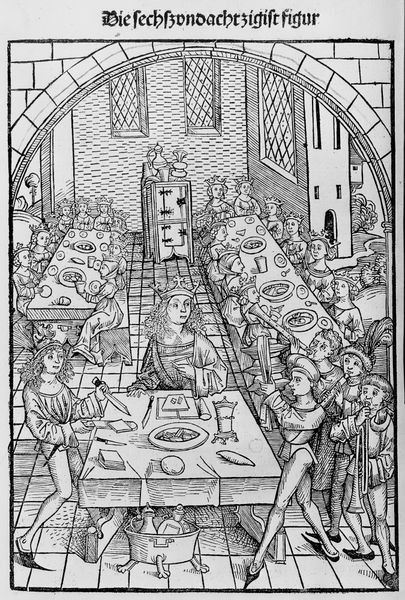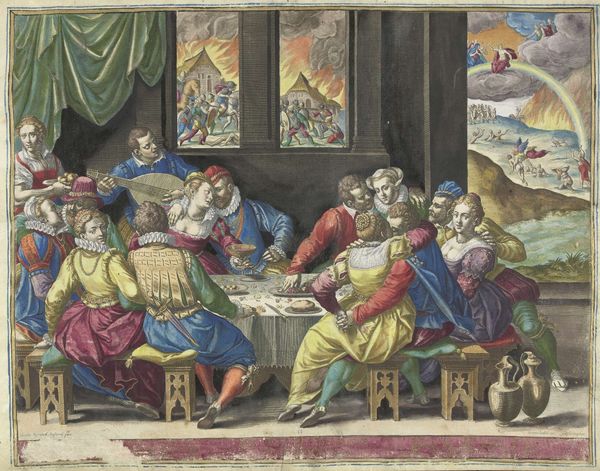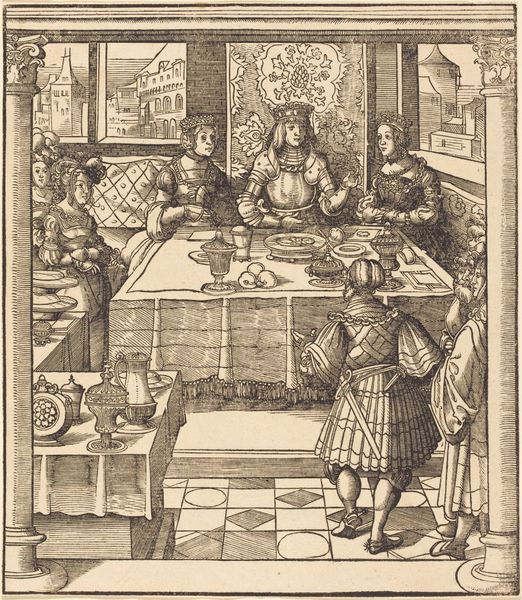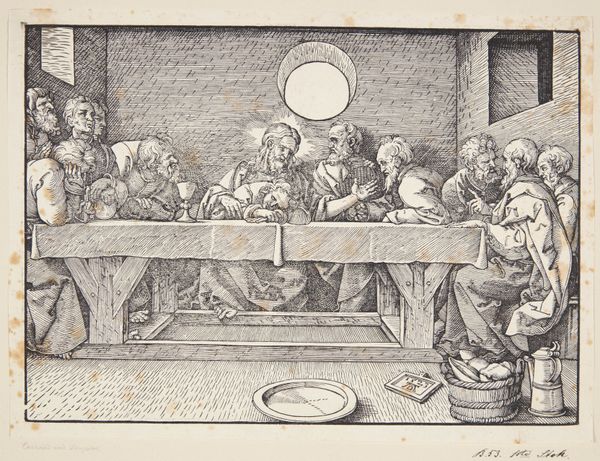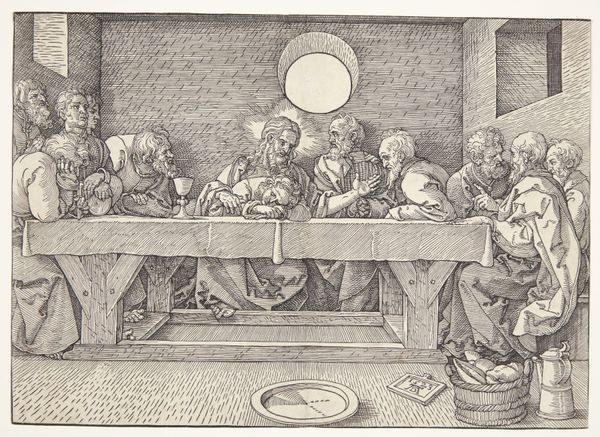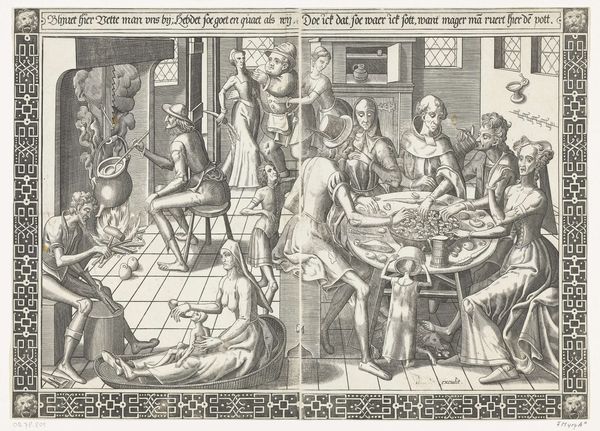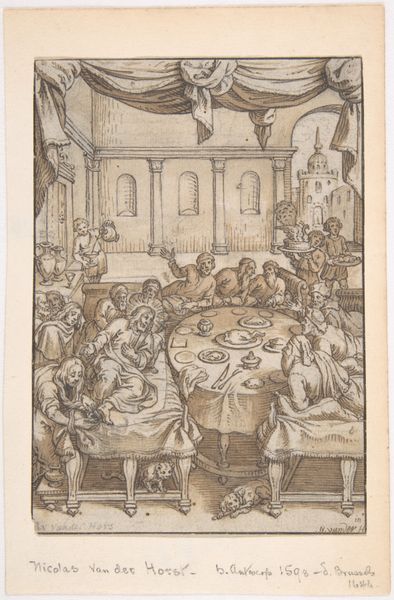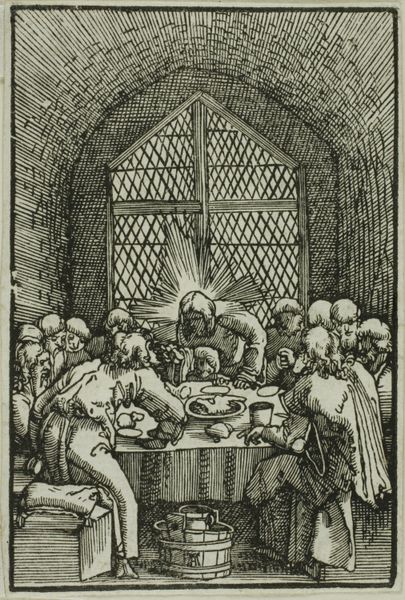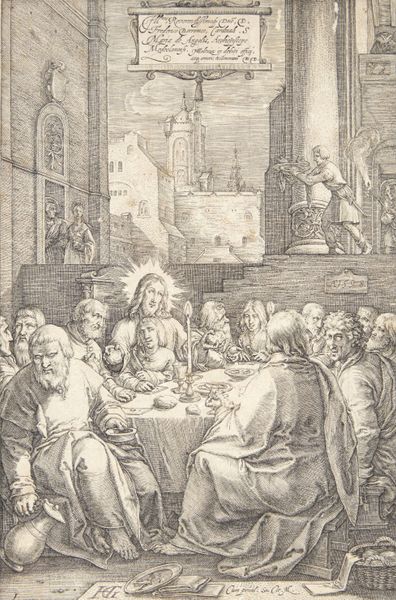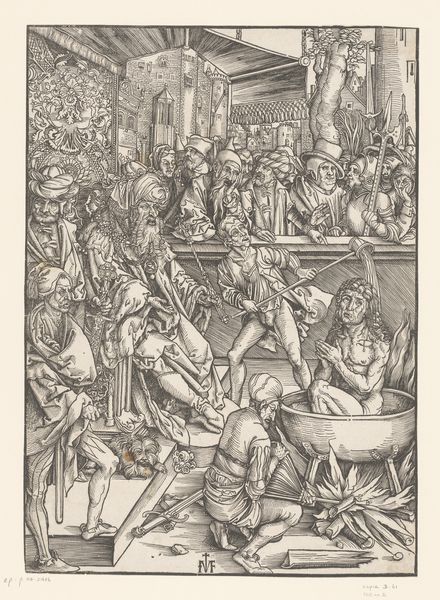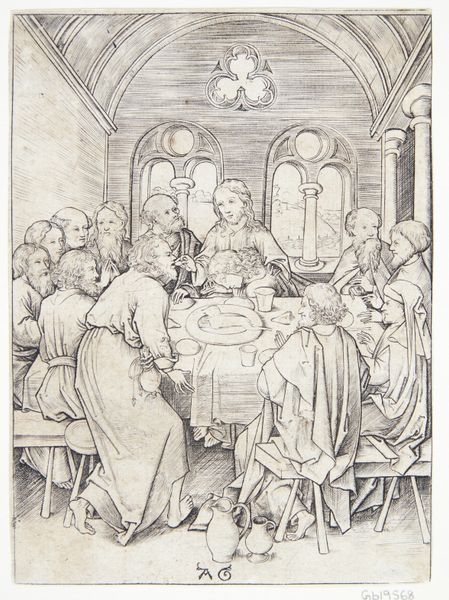
sculpture
#
medieval
#
narrative-art
#
sculpture
#
naive art
#
men
#
history-painting
#
decorative-art
#
miniature
#
christ
Dimensions: Overall: 6 5/8 × 5 3/8 in. (16.8 × 13.7 cm)
Copyright: Public Domain
Curator: So, here we have "The Last Supper," created sometime between 1885 and 1915 by Alfred André. It’s currently part of the Metropolitan Museum of Art’s collection. The medium appears to be some form of sculpted metal, possibly enameled. What are your first thoughts on it? Editor: Visually, I’m immediately struck by the intimacy. The way the figures are arranged creates a closed circle. It feels… claustrophobic, yet intense. Curator: That's an interesting reading. Considering the source material – the final meal shared between Jesus and his disciples before the crucifixion - André certainly emphasizes the emotional intensity of the event. The gathering around the table becomes almost insular, heightening the sense of impending doom. Editor: Absolutely. I see this scene embodying so many loaded ideas about representation, access, and hierarchy. How does André's rendering, made at the turn of the century, speak to enduring or evolving interpretations of this pivotal moment in Christian history? The positioning and treatment of the characters seem rooted in Medieval renderings of the scene, what's the effect of casting this 'last supper' within what feels like very regressive constraints? Curator: Well, it could be argued that by situating the work in a seemingly "naive" aesthetic with medieval art, he flattens the hierarchy, paradoxically perhaps. And while he engages a key narrative of Medieval painting—it might represent a renewed sense of spiritual connection or perhaps a critique of modern alienation. It is a sculpture, after all, miniature in scale. Editor: Hmmm, I get where you’re going, but I still read a conservative structure to the narrative depicted. It’s almost theatrical in its staging. Jesus' centered and highlighted placement within this supposedly democratic "circle" enforces a patriarchal viewpoint on this historic narrative, framing it under conventional social and religious norms. But maybe that reading has me reflecting too much through the current zeitgeist of inclusivity? Curator: Not necessarily, but thinking through these interpretations allows us to examine how André's historical context influences the way the story continues to be told, reshaped, and reinterpreted by contemporary audiences. Editor: Indeed, and in turn invites conversations around issues of access, privilege, and narrative ownership across different social contexts. So much is woven into the quiet presentation of this miniature “Last Supper.” Curator: Yes, seeing it displayed in a museum like the Met also prompts considering who the intended audience was and what the function of the piece might have been, when removed from its creation and intended purpose.
Comments
No comments
Be the first to comment and join the conversation on the ultimate creative platform.
